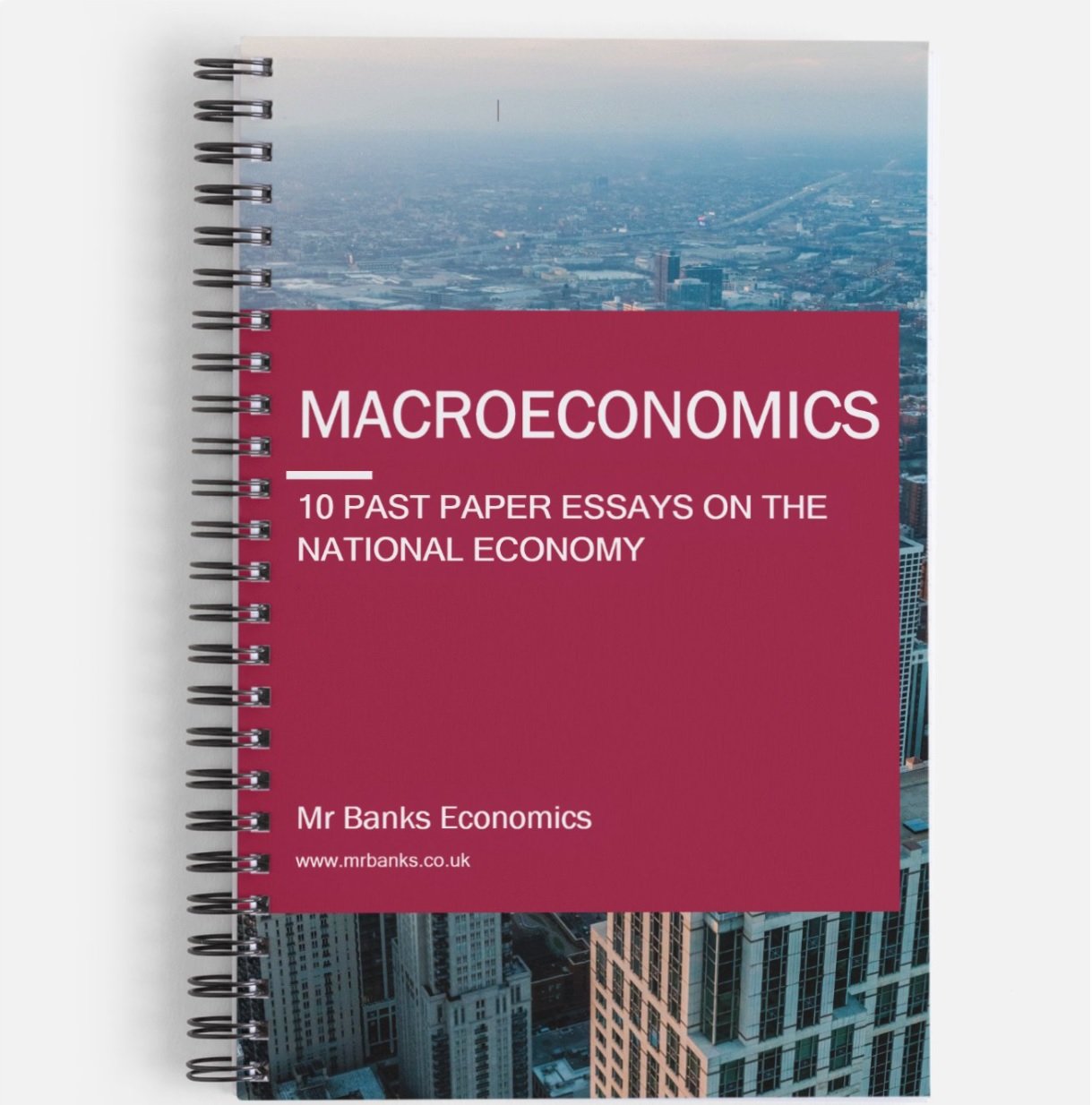Measuring Inflation
A-level Economics
How we measure it. how it is used.
Definitions
First of all, what is the definition of inflation? It is the ‘sustained rise in the average price of goods and services over a period of time’. I want to stress that it is not the price of ALL goods that is rising, it is the AVERAGE PRICE of goods that is rising.
The second way of defining inflation is the 'fall in the purchasing power of money'. It means that in our own economy, we are unable to buy as much as before. Each £1 can buy less and less each year in terms of goods.
The Facts
When inflation is positive, what does it mean? It means that average prices are rising.
If inflation is negative, it means that average prices are falling. This is called deflation.
If the rate of inflation is positive and rising, it means that average prices are rising at a faster rate/a higher speed.
If the rate of inflation is positive but it is falling (e.g. 5% to 2%), this is called disinflation.
When inflation extremely high, it means prices are going up extremely quickly - this is called hyperinflation.
What units do we measure inflation in?
Inflation in the UK is measured using either RPI or CPI. The main unit (index) that the UK uses is CPI.
More Info on the RPI (Retail Price Index)
Two surveys are used to calculate it:
Living Costs and Food Survey
The second survey is based on prices
Living Costs and Food survey: a survey of around 6000 households. Finds out what people spend their money on and how much they spend on it as a proportion of their income. E.g. haircuts, cinema tickets.
An example is if you spend 30% on transport, then a 30% weighting will be allocated for transport. What is a weighting? A weighting is a way to figure out how important something is. So spending 30% of your income on transport has a bigger impact on how much you spend on apples. You may spend 0.1% of your income on apples per month - so who cares if apples go up in price?
The second survey collects information on the prices of the ‘basket of goods’. The basket of goods is a basket of around 700 of the most commonly used goods and services. It’s important we use this basket because its contents contain the most commonly used goods and services by the average household.
Once these two surveys have collected the information that we need, we can work out the RPI.
More Info on the CPI (Consumer Price Index)
There are 3 main differences between RPI and CPI
Some items are excluded from CPI - items like mortgage interest payments, council tax.
The mathematical calculation is slightly different between the two.
The CPI uses a larger sample of the population.
RPI vs CPI - What is the difference? What is the best measure to use?
So in essence, there are strengths and weaknesses of both measures. The fact CPI uses a higher sample makes it better, but the fact that RPI includes more items could make it more relevant to people.
Generally, the CPI figure is a little lower than RPI but generally if inflation is occurring, then they will both be going in the same direction.
Some other weaknesses:
RPI excludes top 4% income households.
CPI excludes mortgage interest payments and council tax.
Information given by households in the Living Costs and Food Survey can be inaccurate.
The basket of goods is infrequently updated (once a year). So short-term changes in spending are not accounted for.
Usage of all this in the Real World?
We have an inflation target in the UK of 2% per annum CPI inflation.
Inflation measurements can be used when negotiating higher wages. The government also uses these measures to decide pensions and other benefits. Also, the government uses inflation when considering the National Minimum Wage.
International Competitiveness - comparing our inflation rate with that of the world. We can easily track our price competitiveness which is important for our exports and imports. The lower our inflation over time, the more likely we are competitive - this should help exports increase, and imports should decrease.
IF YOU WANT GOOD GRADES FAST, BUY THESE BOOKS!
MACROECONOMICS MODEL ANSWER BOOK
10 Past Papers with Model Answers on the National Economy
Written by an experienced Economics tutor
Full model answers with diagrams
Suitable for all UK Economics exam boards
Physical booklet
£20.00
MICROECONOMICS MODEL ANSWER BOOK
10 Past Papers with Model Answers on Market Failure
Written by an experienced Economics tutor
Full model answers with diagrams
Suitable for all UK Economics exam boards
Physical booklet
£20.00


